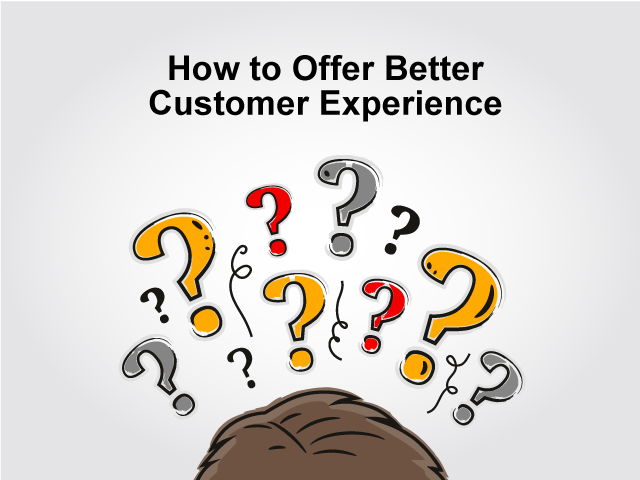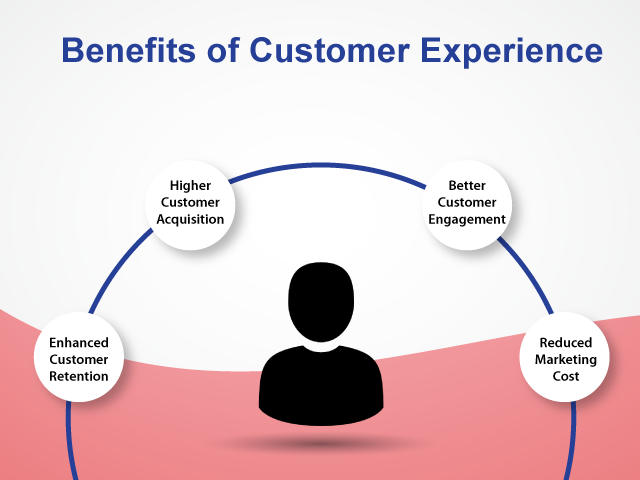With the advent of the internet in various business verticals, customers have become more demanding of product quality and services. The businesses have shifted their goals from just selling the products and services to providing an overall experience.
The organizations are investing heavily to incorporate new technologies that can help them provide better customer experience, resulting in improved customer retention and enhanced profit margins.
To give a clear picture of the influence of trending technologies to improve the customer experience, a report by Insight Ace Analytics, the AI-enabled eCommerce market is projected to witness a substantial 15.7% CAGR during the tenure of 2021 to 2030.
What does customer experience imply in eCommerce?
When it comes to eCommerce businesses and online retail stores, customer experience refers to the engagement management of customers by brands across the internet.
Customer experience in an eCommerce business describes the end-users perception of how the business interacts with them, and in some cases, vice versa.
Whether in-store, mobile, or web, the customer’s perception is the major driving factor affecting their behaviour. This, as a result, encourages brand loyalty and builds brand image amongst the customers.
Related read: How to build customer trust online: 8 solid ways
Evolution of customer experience
Since now we have a better understanding of customer experience in the eCommerce business, let’s look at how the industry has evolved. The evolution can be differentiated into two phases. These phases are as follows:
Phase 1: Pre-Internet Era
Customer experience as we know it today can be traced back to the late 1920s when American psychologist Daniel Starch coined and popularized the term market research in advertising. This was followed up by the establishment of Gallup polls in the 1930s.
The main agenda behind these terms was to identify the factors that kept the customers interested in a particular product.
Later in the 1980s, a new strategy was created, known as Total Quality Management or TQM. It was developed to set up an equilibrium between demand and supply. The strategy was specifically designed to improve customer satisfaction using consistent improvement in customer experience cycles.
This was all done in the pre-internet era, where relationships while selling and customer-friendly contracts were the major norms for customer experience. However, there was little to no emphasis on long-term customer services since switching from one brand to another was not an easy option.
However, the competition got fiercer in the 1990s as the sellers could now use the internet to sell online. Today, a customer can switch from one brand to another with just one click.
Phase 2: Digital age
The digital age in the retail business marks the beginning of eCommerce. Sellers were now able to reach the customers at almost any location across the globe. This scenario made the competition among the brands fiercer.
Customer retention became a significant challenge for the eCommerce businesses, and the organizations emphasized customer experience and customer satisfaction.
Moreover, the initial strategy around products and services was now developed as customer-centric demand-oriented.
Additionally, data collection and analysis with the help of the Internet of Things (IoT), artificial intelligence, and data analytics were also integrated for more data-oriented strategies.
Since we now know how customer experience has evolved over the years, let’s have a walk-through of how eCommerce businesses can provide a better customer experience.
Related read: How To Get Repeat Customers; 5 Proven Ways For Customer Retention
How to offer great customer experience
Brand loyalty is built on the interaction that happens between customers and organizations. Here are a few things a business can do to ensure that they build a seamless experience.
Pre-purchase experience
In an eCommerce business, the customer experience begins way before the prospect becomes a paying customer.
It starts from the moment an individual views or notices the brand. Consequently, everything that does or does not happen between the brand and customer ensures a good or bad experience.
Let’s look at it like this:
If the extent of customers’ experience with the brand is that they know it exists, well – that’s not saying much for the brand experience, does it?
On the other hand, if a brand can immediately make its brand value clear to the customer, even to the most mildly-interested prospect, the brand stands a pretty good chance of getting a loyal customer soon.
So how does a brand improve the pre-purchase experience?
To provide a better pre-purchase experience, the eCommerce businesses must keep the following things in mind while designing their customer strategy:
- What does the brand offer?
- What’s in there for the customer?
- What are the customer’s options?
To offer a better experience, the customer must be able to get the answer to all the questions with a few simple clicks. However, there might be several methods to deliver this information; eCommerce businesses should figure out what works best for their customers.
Shopping and purchasing experience for the customers
The eCommerce customer experience also consists of the moments surrounding the customer’s actual purchase. Keeping the prospective customers informed is the factor in getting them to take the plunge.
During this time, the prospect will require some essential information such as:
- Product availability, specs, and pricing
- Transactional policies such as returns, exchange, shipping fees, etc.
- Brand’s/company’s policies
All of this information and various others can potentially be the deciding factor as to whether the prospect will convert into a customer or not.
An eCommerce business must understand that not providing this information will end the experience even before turning a prospect into a customer.
Furthermore, the eCommerce business must provide laser-targeted offers and values to the soon-to-be customers. Delivering upsell and cross-sell offers can ensure that the prospects get maximum value out of their purchases from the brand.
At this stage, the customer experience involves the actual processing of the purchase. The eCommerce business has to ensure that the customers can complete their purchase as they would have expected it, i.e., with little to no friction.
Related read: The Do’s and Don’ts for the perfect eCommerce website
Post-purchase customer experience
If the eCommerce businesses think selling a product to the prospect and converting it into a customer does the job for them, that’s where they are wrong. On the contrary, the organizations’ work to offer a seamless customer experience has just begun.
The overall goal behind providing a better experience to the customers is to attract them to the business for more purchases. To do so, the brand must:
- Proactively deliver updates, promotional offers, and announcements to the customers through various channels.
- Develop events, programs, and other activities to add value to the experience.
- Act on the feedback from both the satisfied and dissatisfied customers.
Once a prospect gives its money to an eCommerce business, the brand’s duty is to consider it a customer until the end or until the customer decides that it no longer wants the brand’s services.
Once they leave, there is no guarantee that they will return on their own until the brand gives them a reason.
Benefits of Customer experience in eCommerce business
Looking at how a business provides a better experience to the customers, it is noticeable that a good experience shall offer a bundle of benefits to the eCommerce business.
So what are the benefits of customer experience in an eCommerce business? Let’s have a look:
Enhanced Customer Retention
A better customer experience is the major factor that drives the customers back to a particular brand. It allows the eCommerce business to develop brand loyalty as it enables the customer to feel special.
With excellent customer experience strategies, the brand creates a bond with customers, which helps them improve their customer retention rate.
Higher Customer Acquisition
Acquiring new customers has become a tough challenge for the eCommerce businesses today. With cut-throat competition, the customers have several options for a single product.
Good customer experience can be a game-changer for eCommerce businesses to stay ahead of the competition.
Better Customer Engagement
The statement “data is the king” has been read several times in multiple articles. To collect the data, eCommerce businesses try to engage more with customers. They try to understand the patterns of purchase, preferences, mode of payments, and shopping channels.
As a result, they have better chances of engagement with the customers. Providing a good customer experience allows the brand to interact with the end-users directly.
Reduced Marketing Cost
To reach a larger audience, eCommerce businesses invest a large amount of capital into various channels. What if you could reduce this cost by providing a good customer experience?
A satisfied customer is the best marketer and promoter of the product and, more importantly, a massive brand advocate. Such customers unknowingly promote the brand to their friends, acquaintances, and contacts. So it can be rightly said that offering a good customer experience can reduce the marketing cost for an eCommerce business.
To attract customers to your business, an attractive layout of the online store is one of the critical factors.
To make the customers’ shopping experience seamless, companies such as Instamojo provide hassle-free online payment and online store development services to the client. Instamojo also offers analytics to the clients to ensure they create a smooth customer experience strategy.
Conclusion
Looking at the benefits and advantages of a good customer experience, no wonder eCommerce businesses are now adopting a strategy that can help them achieve this.
To help the eCommerce business owners provide a better customer experience, Pickrr offers advanced tools and solutions to the eCommerce businesses—such as, Pickrr Predict allows the sellers to analyze the customers’ order data that can further help them reduce the RTO rate.
Additionally, the company also offers Pickrr Advantage as their SaaS-based solution. This allows the sellers to deliver their products to the customers on the first delivery attempt.
Moreover, solutions such as Pickrr Connect empowers the sellers to have two-way communication with their customers. This, as a result, enables them to collect the crucial customer-centric data such as preference on modes of payment.
Altogether, with its advanced eCommerce solutions and value-added services, Pickrr Technologies allows the sellers to connect, engage, and support their customers, ensuring a better customer experience.
Pickrr is one of Instamojo’s most trusted eCommerce shipping and logistics partner that you can connect to via Instamojo’s dashboard.




